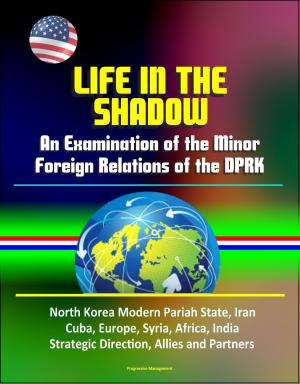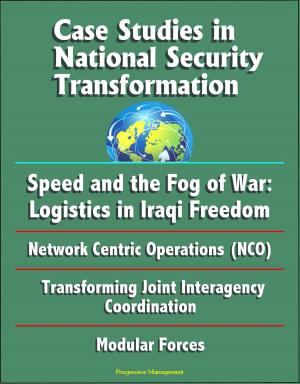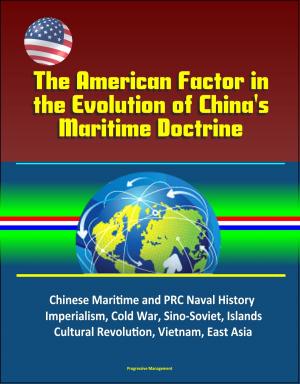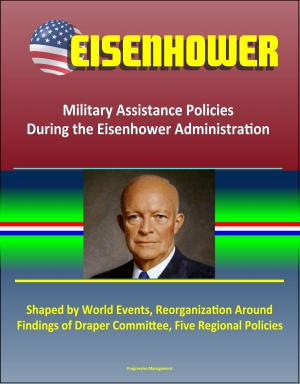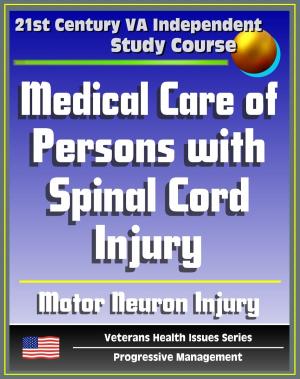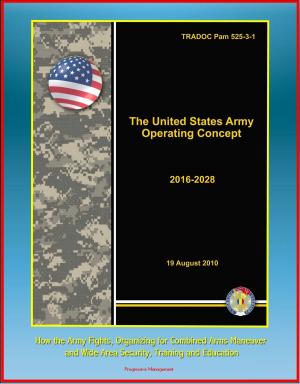Closing the Gap: The Effect of China's Rise on Taiwan's Independence Policy - PRC Growing Military Capability, Taipei Policy, ROC Domestic Politics and Movements, Defense Programs, Procurements
Nonfiction, History, Military, Weapons, Asian, China| Author: | Progressive Management | ISBN: | 9781311056085 |
| Publisher: | Progressive Management | Publication: | March 6, 2016 |
| Imprint: | Smashwords Edition | Language: | English |
| Author: | Progressive Management |
| ISBN: | 9781311056085 |
| Publisher: | Progressive Management |
| Publication: | March 6, 2016 |
| Imprint: | Smashwords Edition |
| Language: | English |
Professionally converted for accurate flowing-text e-book format reproduction, this study examines the shifts in Taiwan's independence policy since 1991 to determine whether Taipei has been more restrained at times of military vulnerability. The objective is to determine whether Taipei's actions favoring independence are dependent on threats to its security from offensive actions by the People's Republic of China (PRC), and if so, to determine the effect of the PRC's growing military capability on those independence policies. The level of U.S. support for Taiwan is a significant component of its relative security. Therefore shifts in that support are evaluated and the resulting implications for U.S. policy assessed.
Taipei's official policy has hovered around the status quo with occasional excursions toward independence since 1991. These excursions occurred for the most part when Taipei was relatively secure from PRC threats, and were curbed when concerns were expressed by Washington. PRC military strength and the level of U.S. support not only influence Taiwan's independence policy, but also Taiwan's domestic politics. For peaceful resolution, Washington must continue its policy of strategic ambiguity and, as a new KMT regime in Taiwan eases the tension of recent years, it should reconsider non-involvement and be prepared to play at least a passive role in PRC-ROC negotiations.
CHAPTER I * INTRODUCTION * A. PURPOSE AND IMPORTANCE * B. BACKGROUND * C. LITERATURE REVIEW * D. METHODOLOGY * E. ROADMAP * CHAPTER II * 1991-1996: BURGEONING DEMOCRACY TO CRISIS * A. ROC DOMESTIC POLITICS AND MOVEMENTS * 1. Democratic Progress and the Growth of Political Parties * 2. Political Party Goals and Rhetoric * 3. Independence Policy * B. LEVEL OF UNITED STATES COMMITMENT TO ROC * 1. Support for Political Movements and Political Interventions * 2. Willingness to Defend Taiwan * C. MILITARY BALANCE BETWEEN PRC AND ROC * 1. PRC Procurements and Development * 2. ROC Procurements and Development * 3. Overall Capability Spread * D. CONCLUSION * CHAPTER III * 1996 - 2001: CRISIS TO ADMINISTRATION CHANGE * A. ROC DOMESTIC POLITICS AND MOVEMENTS * 1. Blue-Green Politics * 2. Independence Policy * B. LEVEL OF UNITED STATES COMMITMENT TO ROC * 1. Willingness to Defend Taiwan * 2. Support for Political Movements and Political Interventions * C. MILITARY BALANCE BETWEEN PRC AND ROC * 1. PRC Procurements and Development * 2. ROC Procurements and Development * 3. Overall Capability Spread * D. CONCLUSION * CHAPTER IV * 2001-2007: THE CHEN ADMINISTRATION * A. ROC DOMESTIC POLITICS AND MOVEMENTS * 1. Pan-Blue Political Parties, Goals, and Rhetoric * 2. Pan-Green Political Parties, Goals, and Rhetoric * 3. Independence Policy * B. LEVEL OF UNITED STATES COMMITMENT TO ROC * 1. Status of 2001 Defense Package * 2. Support for Political Movements and Political Interventions * 3. Willingness to Defend Taiwan * C. MILITARY BALANCE BETWEEN PRC AND ROC * 1. PRC Procurements and Developments * 2. ROC Procurements and Developments * 3. Overall Capability Spread * D. CONCLUSION * CHAPTER V * CONCLUSION * A. FINDINGS * 1. Independent Variables * 2. Dependent Variable * 3. Need for Further Study * B. ANALYSIS * C. POLICY RECOMMENDATIONS * 1. Future Defense Support for Taiwan * 2. Strategic Ambiguity * 3. PRC-ROC Negotiations * D. SUMMARY * LIST OF REFERENCES * FOOTNOTES
Professionally converted for accurate flowing-text e-book format reproduction, this study examines the shifts in Taiwan's independence policy since 1991 to determine whether Taipei has been more restrained at times of military vulnerability. The objective is to determine whether Taipei's actions favoring independence are dependent on threats to its security from offensive actions by the People's Republic of China (PRC), and if so, to determine the effect of the PRC's growing military capability on those independence policies. The level of U.S. support for Taiwan is a significant component of its relative security. Therefore shifts in that support are evaluated and the resulting implications for U.S. policy assessed.
Taipei's official policy has hovered around the status quo with occasional excursions toward independence since 1991. These excursions occurred for the most part when Taipei was relatively secure from PRC threats, and were curbed when concerns were expressed by Washington. PRC military strength and the level of U.S. support not only influence Taiwan's independence policy, but also Taiwan's domestic politics. For peaceful resolution, Washington must continue its policy of strategic ambiguity and, as a new KMT regime in Taiwan eases the tension of recent years, it should reconsider non-involvement and be prepared to play at least a passive role in PRC-ROC negotiations.
CHAPTER I * INTRODUCTION * A. PURPOSE AND IMPORTANCE * B. BACKGROUND * C. LITERATURE REVIEW * D. METHODOLOGY * E. ROADMAP * CHAPTER II * 1991-1996: BURGEONING DEMOCRACY TO CRISIS * A. ROC DOMESTIC POLITICS AND MOVEMENTS * 1. Democratic Progress and the Growth of Political Parties * 2. Political Party Goals and Rhetoric * 3. Independence Policy * B. LEVEL OF UNITED STATES COMMITMENT TO ROC * 1. Support for Political Movements and Political Interventions * 2. Willingness to Defend Taiwan * C. MILITARY BALANCE BETWEEN PRC AND ROC * 1. PRC Procurements and Development * 2. ROC Procurements and Development * 3. Overall Capability Spread * D. CONCLUSION * CHAPTER III * 1996 - 2001: CRISIS TO ADMINISTRATION CHANGE * A. ROC DOMESTIC POLITICS AND MOVEMENTS * 1. Blue-Green Politics * 2. Independence Policy * B. LEVEL OF UNITED STATES COMMITMENT TO ROC * 1. Willingness to Defend Taiwan * 2. Support for Political Movements and Political Interventions * C. MILITARY BALANCE BETWEEN PRC AND ROC * 1. PRC Procurements and Development * 2. ROC Procurements and Development * 3. Overall Capability Spread * D. CONCLUSION * CHAPTER IV * 2001-2007: THE CHEN ADMINISTRATION * A. ROC DOMESTIC POLITICS AND MOVEMENTS * 1. Pan-Blue Political Parties, Goals, and Rhetoric * 2. Pan-Green Political Parties, Goals, and Rhetoric * 3. Independence Policy * B. LEVEL OF UNITED STATES COMMITMENT TO ROC * 1. Status of 2001 Defense Package * 2. Support for Political Movements and Political Interventions * 3. Willingness to Defend Taiwan * C. MILITARY BALANCE BETWEEN PRC AND ROC * 1. PRC Procurements and Developments * 2. ROC Procurements and Developments * 3. Overall Capability Spread * D. CONCLUSION * CHAPTER V * CONCLUSION * A. FINDINGS * 1. Independent Variables * 2. Dependent Variable * 3. Need for Further Study * B. ANALYSIS * C. POLICY RECOMMENDATIONS * 1. Future Defense Support for Taiwan * 2. Strategic Ambiguity * 3. PRC-ROC Negotiations * D. SUMMARY * LIST OF REFERENCES * FOOTNOTES


